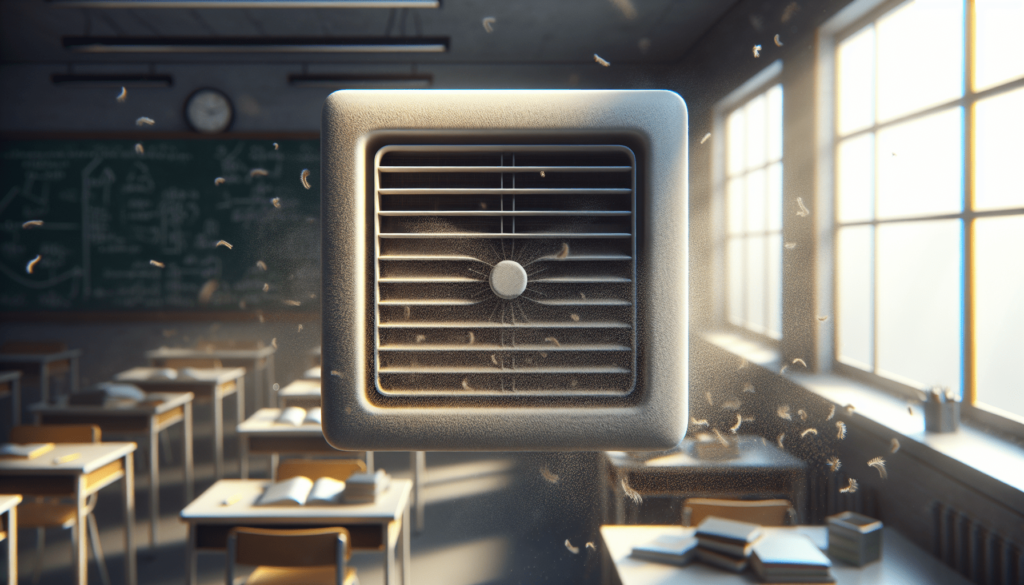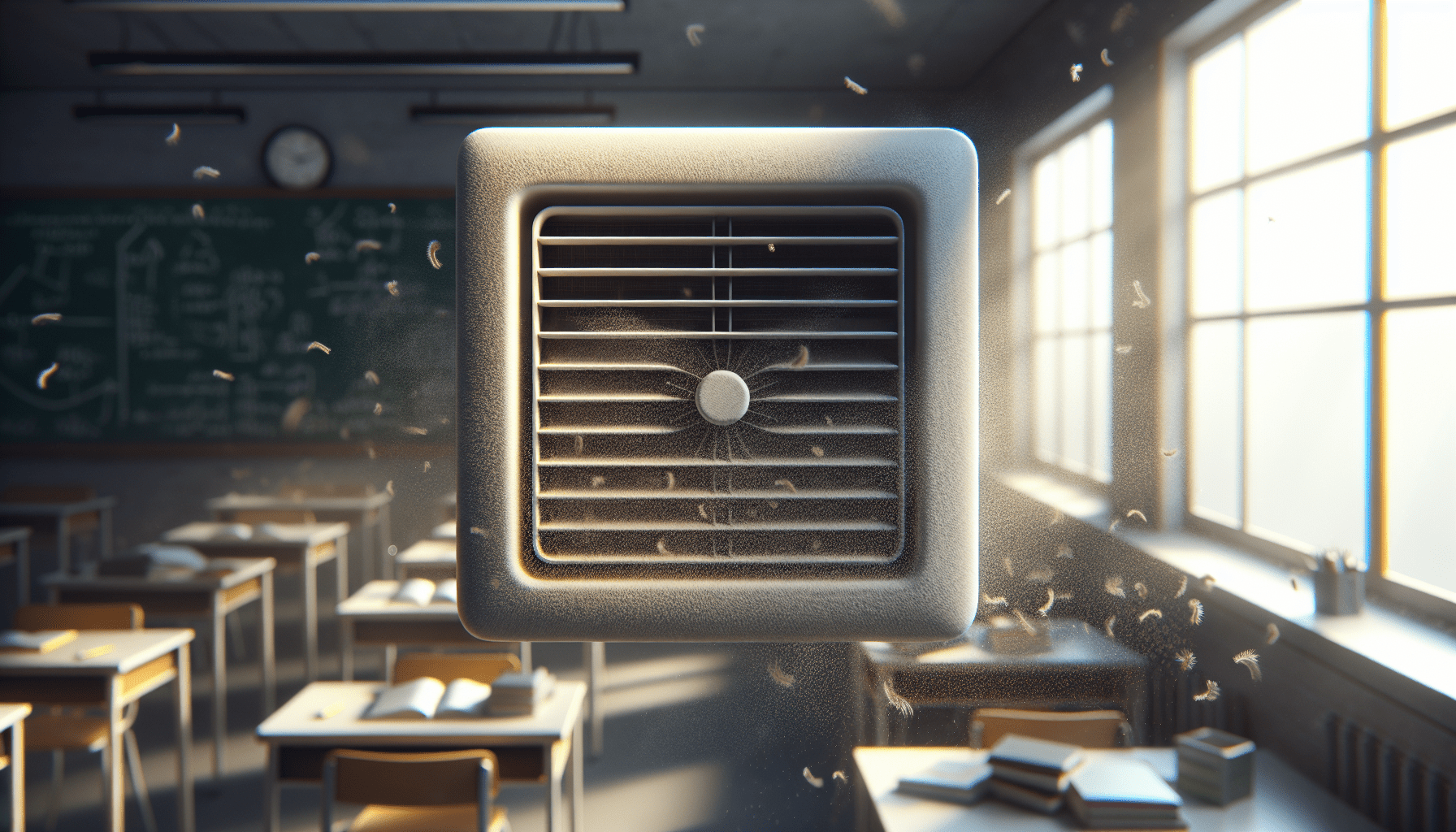Have you ever wondered why you or your colleagues start sneezing, itching, or coughing more frequently while at work or school? These symptoms may not just be a coincidence—they could be due to common allergens found in office and classroom environments. Identifying these allergens and understanding their impact can help create healthier, more comfortable places to work and learn.
Understanding Allergens
Allergens are substances that can cause allergic reactions when inhaled, ingested, or come into contact with the skin. In office and classroom settings, various factors contribute to the accumulation of these allergens. Let’s dive into the common culprits.
Dust Mites
Dust mites are tiny microscopic creatures that thrive in warm, humid environments. They tend to accumulate in fabric materials such as carpets, curtains, and upholstered furniture.
Why Dust Mites are Problematic:
- Respiratory Issues: Dust mites produce waste products that can cause allergies and trigger asthma symptoms.
- Skin Reactions: They can also provoke skin conditions like eczema.
Tips for Reducing Dust Mites:
- Use hypoallergenic covers for mattresses and pillows.
- Regularly wash fabric items in hot water.
- Increase ventilation to reduce humidity.
Mold Spores
Mold can grow in any area where moisture is present. This includes damp carpets, walls, and ceilings. Mold spores can become airborne and are easily inhaled, making them a significant allergen in indoor environments.
Why Mold Spores are Problematic:
- Respiratory Distress: Exposure can lead to wheezing, sneezing, and coughing.
- Serious Health Risks: Long-term exposure can cause more severe respiratory conditions.
Tips for Reducing Mold:
- Fix leaks and clean up water spills promptly.
- Use a dehumidifier to maintain low humidity levels.
- Regularly clean and inspect HVAC systems.
Pollen
Though typically considered an outdoor allergen, pollen can infiltrate indoor spaces through open windows, doors, and even on people’s clothing.
Why Pollen is Problematic:
- Seasonal Allergies: Known for causing hay fever, leading to runny noses, itchy eyes, and sneezing.
Tips for Reducing Pollen:
- Keep windows and doors closed during high pollen seasons.
- Use air purifiers with HEPA filters.
- Regularly clean and vacuum the premises.
Pet Dander
While pets are generally not allowed in most office and classroom settings, pet dander can still be carried in on clothing or personal items. Pet dander consists of tiny skin flakes shed by cats, dogs, and other animals.
Why Pet Dander is Problematic:
- Allergic Reactions: Triggers sneezing, watery eyes, and even asthma attacks.
Tips for Reducing Pet Dander:
- Encourage staff and students to regularly clean their clothing.
- Use air purifiers.
- Clean the environment thoroughly to remove any residues.
Chemical Allergens
Cleaning products, air fresheners, and other chemicals used in office and classroom environments can often be sources of allergens.
Why Chemical Allergens are Problematic:
- Respiratory and Skin Reactions: Can cause headaches, nausea, and skin irritation.
Tips for Reducing Chemical Exposure:
- Opt for eco-friendly, non-toxic cleaning products.
- Ensure proper ventilation when using chemicals.
- Store chemicals in well-ventilated areas away from common spaces.
Air Quality and Ventilation
Maintaining good air quality is crucial in minimizing allergens. Poor ventilation can trap allergens inside, leading to higher exposure levels.
Importance of Good Air Quality
Good air quality reduces the concentration of allergens, making it easier for everyone to breathe and reducing the risk of allergic reactions.
Effective Steps to Improve Air Quality:
- Use of Air Purifiers: Consider air purifiers with HEPA filters that capture fine particulate matter.
- Regular Maintenance of HVAC Systems: Clean and replace filters according to the manufacturer’s instructions.
- Adequate Ventilation: Ensure that fresh air can circulate, reducing the concentration of airborne allergens.
Regular Cleaning Routines
A clean environment is less likely to harbor allergens. Implementing a structured cleaning routine significantly lowers allergen concentrations.
Cleaning Strategies for Allergen Reduction:
- Daily Cleaning: Dust and vacuum floors, desks, and other surfaces.
- Deep Cleaning: Periodically deep clean carpets, upholstery, and hard-to-reach areas.
- Use of Hypoallergenic Products: Opt for anti-allergen cleaning products.

Personal Measures for Allergy Management
While it’s essential to maintain a clean, allergen-reduced environment, individuals can also take personal steps to manage allergies effectively.
Personal Hygiene
Maintaining personal hygiene can reduce the risk of transferring allergens from one place to another.
Effective Personal Hygiene Tips:
- Regular Hand Washing: Wash hands frequently, especially after being outdoors.
- Changing Clothes: Change clothes if you have been exposed to a high pollen area before entering the office or classroom.
Allergy Medications
For some, over-the-counter or prescribed medications can help manage allergy symptoms.
Types of Allergy Medications:
- Antihistamines: Help reduce sneezing, itching, and runny noses.
- Nasal Sprays: Reduce nasal congestion and inflammation.
- Eye Drops: Relieve itchy and watery eyes.
Consult with Healthcare Providers
If you experience severe or persistent allergy symptoms, it’s essential to consult a healthcare provider for proper diagnosis and treatment.
Healthcare Provider’s Role:
- Allergy Testing: Identify specific allergens causing symptoms.
- Customized Treatment Plans: Develop an effective strategy for managing allergies.
Special Considerations for Classroom Environments
Classrooms, in particular, pose unique challenges due to the mix of students, varying activities, and frequent changes in occupants.
Designated Allergy-Free Zones
Creating zones that are free of common allergens can help at-risk students avoid exposure.
How to Create Allergy-Free Zones:
- Pet-Free Areas: Ensure no pets are allowed in specific zones.
- Chemical-Free Areas: Use non-toxic products for cleaning and supplies.
- No-Food Zones: Limit food consumption to designated areas to prevent food-related allergens.
Allergy Education for Students
Educating students about allergies and how to prevent exposure can foster a supportive environment.
Educational Strategies:
- Awareness Programs: Include lessons on common allergens and their effects.
- Peer Support: Encourage students to support classmates with allergies.

The Role of the Building Structure
The building structure itself can influence the concentration and presence of allergens.
Materials and Construction
The materials used in construction can impact allergen levels. For example, certain flooring types are easier to clean and less likely to harbor allergens than carpeting.
Recommended Materials:
- Hardwood or Tile Flooring: Easier to clean and less likely to accumulate dust mites.
- Hypoallergenic Paints and Sealants: Reduce the release of volatile organic compounds (VOCs).
HVAC Systems and Air Circulation
Effective HVAC systems and proper air circulation are crucial in maintaining low allergen levels.
Best HVAC Practices:
- Regular Maintenance: Clean and replace filters and ensure the system is functioning optimally.
- Use of Air Exchangers: Incorporate systems that bring in fresh outdoor air while expelling indoor air.
Moisture Control
Preventing moisture buildup is key to controlling mold and dust mites.
Moisture Control Techniques:
- Use Dehumidifiers: Especially in basements or areas prone to dampness.
- Prompt Repairs: Address leaks and water damage immediately.
Role of Technology
Emerging technologies offer advanced methods for monitoring and reducing allergens.
Air Quality Monitors
These devices can help keep track of indoor air quality in real-time.
Benefits of Air Quality Monitors:
- Immediate Feedback: Provide data on pollutant levels, allowing for prompt action.
- Automated Systems: Some can integrate with HVAC systems to automatically adjust airflow and filtration.
Smart Cleaning Technologies
Utilizing smart cleaning robots and advanced vacuums can enhance cleaning efficiency.
Advantages of Smart Cleaning:
- Consistent Cleaning: Automated routines ensure regular upkeep.
- Advanced Filtration: High-efficiency particulate air (HEPA) filters capture more allergens.
Mobile Apps
Mobile applications can assist in monitoring allergens and providing personalized advice.
How Mobile Apps Help:
- Track Symptoms: Log symptoms to identify patterns and triggers.
- Receive Alerts: Get notifications about local allergen levels and air quality.
Collaboration and Advocacy
Creating allergen-free office and classroom environments requires a collective effort.
Management and Staff Participation
Encouraging participation from management and staff can ensure best practices are followed.
Effective Collaboration Strategies:
- Training Programs: Educate staff about allergens and preventive measures.
- Regular Meetings: Discuss allergen issues and solutions.
Policy Development
Implementing policies and guidelines can formalize allergen management efforts.
Policy Suggestions:
- Cleaning Protocols: Establish guidelines for regular cleaning and maintenance.
- Allergy Management Plans: Develop procedures for dealing with allergic reactions in students and staff.
Community Involvement
Engage the broader community in creating a healthier environment.
Community Engagement Ideas:
- Awareness Campaigns: Promote understanding of allergens through workshops and informational materials.
- Parent and Student Participation: Involve parents and students in initiatives to reduce allergens.
Conclusion
Understanding and managing common allergens in office and classroom environments can significantly improve the comfort and health of everyone involved. From regular cleaning routines and personal measures to the use of advanced technology and community collaboration, various strategies can be employed to mitigate allergen presence.
By taking proactive steps and fostering awareness, you can contribute to creating a healthier and more productive environment for work and learning. Remember that a combined effort from individuals, management, and the broader community is essential in tackling the challenge of allergens effectively.
